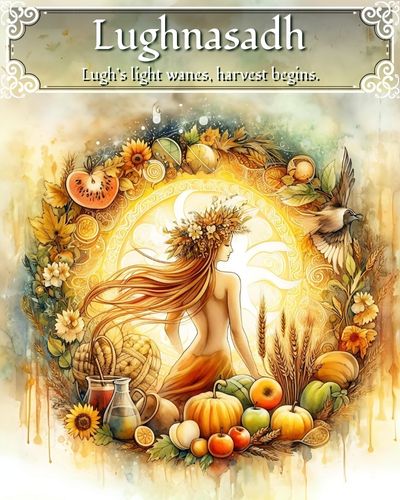
Approx. Reading time: About 22 Minutes

Introduction
Divination, or the practice of seeking knowledge of the future or the unknown through supernatural means, has been a part of human culture and history for centuries. One of the most popular forms of divination is tea leaf reading, also known as tasseography or teomancy. This ancient art involves interpreting the patterns and symbols formed by the tea leaves at the bottom of a cup after they have been steeped in hot water.
The tea leaf reader then examines the patterns and symbols formed by the tea leaves, using their intuition and experience to interpret them. While there are no set rules or guidelines for interpreting tea leaves, there are some common symbols and patterns that can be used as a starting point.

Tasseography can be used for many purposes, including gaining insight into the future, seeking guidance on a particular situation or problem, or as a form of self-reflection. Some people use tasseography as a form of meditation, allowing the symbols and patterns to guide them in their personal growth and development.
History
Tasseography is an ancient art of divination that involves interpreting the patterns and symbols formed by tea leaves at the bottom of a cup after they have been steeped in hot water. This practice has its roots in many cultures, including China, India, and the Middle East, and has been used for centuries to gain insight into the future or the unknown.
The word “tasseography” comes from the French word “tasse” (cup) and the Greek word “graph” (to write), which together mean “cup writing.” The practice involves using a cup, typically made of porcelain or ceramic, and a loose-leaf tea, preferably one with larger leaves, to create patterns and symbols that can be interpreted by a tea leaf reader.
Tea leaf reading has its roots in China, where tea was first brewed more than 5,000 years ago. The art of tea leaf reading was then brought to Europe in the 17th century, where it quickly became popular among the aristocracy. Today, tea leaf reading is practiced all over the world and is often used as a form of entertainment or to gain insight into one’s future.
Practice
To begin a tea leaf reading, one must first choose a loose-leaf tea, preferably one with larger leaves, and steep it in a cup of hot water. The tea should be allowed to steep for a few minutes before the tea leaves are swirled around the cup three times and then poured out. The remaining tea leaves at the bottom of the cup are then interpreted.
Some common symbols found in tasseography include animals, such as birds or cats, which can represent companionship, loyalty, or protection. Shapes, such as circles or squares, can represent stability, completeness, or balance. Numbers can represent specific dates, ages, or events in the future, while letters can represent initials or names of people who will play a significant role in the future.
Objects, such as hats or keys, can represent specific events or situations in the future, while lines can represent paths or journeys, or indicate the length of time that events will take place. Finally, symbols such as hearts, stars, or moons can represent love, luck, or spirituality.
One of the most important aspects of interpreting tea leaves is paying attention to the placement and size of the symbols and patterns. Symbols that appear near the rim of the cup are said to represent the present or the near future, while symbols that appear at the bottom of the cup represent the distant future. The size and shape of the symbols can also indicate their importance, with larger symbols being more significant than smaller ones.
Another important aspect of interpreting tea leaves is considering the context of the reading. The same symbol can have different meanings depending on the person receiving the reading and the situation they are in. For example, a heart symbol could represent love and romance for one person, while for another person it could represent emotional healing or self-love.
Tea leaf readers often use their intuition to guide them in the interpretation process, relying on their senses and inner wisdom to understand the symbols and patterns. Some readers may also use a variety of divination tools, such as tarot cards or crystal balls, to gain additional insights into the reading.
It’s important to note that interpreting tea leaves is not an exact science and should be approached with an open mind and a sense of curiosity. While some people may find the process to be accurate and meaningful, others may view it as nothing more than entertainment. Ultimately, the interpretation of tea leaves is a personal and subjective experience that can provide insights and guidance for those who are open to it.
Interpretation
The interpretation of tea leaves is highly subjective and varies depending on the reader’s experience and intuition. While there are some common symbols and patterns that are often found in tea leaf readings, the interpretation of these symbols can vary depending on the reader’s perspective and the context of the reading.
Common symbols
- Animals: Animals such as birds, cats, and dogs can symbolize companionship, loyalty, and protection.
- Shapes: Shapes such as circles, squares, and triangles can represent stability, completeness, and balance.
- Numbers: Numbers can represent specific dates, ages, or events in the future.
- Letters: Letters can represent initials or names of people who will play a significant role in the future.
- Objects: Objects such as hats, keys, and books can represent specific events or situations in the future.
- Lines: Lines can represent paths or journeys, or they can indicate the length of time that events will take place.
- Symbols: Symbols such as hearts, stars, and moons can represent love, luck, and spirituality.
Tea leaf reading is often used to gain insight into one’s future, but it can also be used to gain insight into one’s present or past. Some people use tea leaf reading as a form of self-reflection, allowing the symbols and patterns to guide them in their personal growth and development.
Animals Interpreted
Animals are commonly found in tea leaf readings and can have a variety of meanings depending on their appearance and context. Here are some of the most common animal symbols found in tea leaf readings and their interpretations:
- Birds: Birds are often associated with freedom, communication, and new beginnings. The type of bird can also provide additional information about the reading. For example, a dove may symbolize peace or a messenger of good news, while an owl may represent wisdom or hidden knowledge.
- Cats: Cats are often associated with independence, intuition, and mystery. A cat symbol may indicate that the querent needs to trust their instincts or seek guidance from their inner wisdom.
- Dogs: Dogs are often associated with loyalty, protection, and companionship. A dog symbol may indicate that the querent will receive support or guidance from a trusted friend or family member.
- Fish: Fish are often associated with abundance, prosperity, and good luck. A fish symbol may indicate that the querent will experience financial or material success in the future.
- Snakes: Snakes are often associated with transformation, healing, and spiritual growth. A snake symbol may indicate that the querent is going through a period of change or needs to shed old patterns and beliefs.
- Butterflies: Butterflies are often associated with transformation, rebirth, and growth. A butterfly symbol may indicate that the querent is experiencing a significant change or transformation in their life.
- Spiders: Spiders are often associated with creativity, weaving, and patience. A spider symbol may indicate that the querent needs to take a more patient and strategic approach to a situation or project.
It’s important to note that the meanings of animal symbols in tea leaf readings can vary depending on the context and the reader’s intuition. Some readers may have different interpretations for the same symbol, and it’s up to the querent to determine which interpretation resonates most with them.
Shapes Interpreted
In addition to animals, shapes are also commonly found in tea leaf readings and can have a variety of meanings. Here are some of the most common shapes and their interpretations:
- Circles: Circles are often associated with wholeness, unity, and completion. A circle symbol may indicate that the querent is experiencing a sense of completeness or unity in a particular area of their life.
- Triangles: Triangles are often associated with strength, balance, and creativity. A triangle symbol may indicate that the querent needs to balance different aspects of their life or approach a situation with a creative perspective.
- Squares: Squares are often associated with stability, security, and structure. A square symbol may indicate that the querent needs to create a more stable and secure foundation for themselves.
- Spirals: Spirals are often associated with growth, transformation, and evolution. A spiral symbol may indicate that the querent is going through a period of growth and transformation or needs to embrace change in their life.
- Lines: Lines are often associated with direction, boundaries, and movement. A line symbol may indicate that the querent needs to set clear boundaries or take a particular direction in their life.
- Crosses: Crosses are often associated with balance, sacrifice, and spiritual connection. A cross symbol may indicate that the querent needs to balance different aspects of their life or connect with their spirituality.
It’s important to note that the meanings of shapes in tea leaf readings can vary depending on the context and the reader’s intuition. Some readers may have different interpretations for the same symbol, and it’s up to the querent to determine which interpretation resonates most with them. Additionally, the placement and size of the shapes can also provide additional information about the reading.
Numbers Interpreted
Numbers can also be found in tea leaf readings and can have a variety of meanings depending on their appearance and context. Here are some of the most common numbers found in tea leaf readings and their interpretations:
- One: One is often associated with independence, self-confidence, and leadership. A number one symbol may indicate that the querent needs to take charge of their life or trust in their abilities.
- Two: Two is often associated with balance, harmony, and partnerships. A number two symbol may indicate that the querent needs to focus on creating more balance in their life or seek harmony in their relationships.
- Three: Three is often associated with creativity, communication, and expansion. A number three symbol may indicate that the querent needs to tap into their creative potential or communicate their ideas more effectively.
- Four: Four is often associated with stability, structure, and practicality. A number four symbol may indicate that the querent needs to create a more stable foundation for themselves or approach a situation with a practical perspective.
- Five: Five is often associated with change, transformation, and freedom. A number five symbol may indicate that the querent is going through a period of change or needs to embrace a sense of freedom in their life.
- Six: Six is often associated with harmony, balance, and service. A number six symbol may indicate that the querent needs to focus on creating harmony in their relationships or seek ways to serve others.
- Seven: Seven is often associated with spirituality, intuition, and inner wisdom. A number seven symbol may indicate that the querent needs to connect with their spirituality or trust in their intuition.
- Eight: Eight is often associated with abundance, prosperity, and success. A number eight symbol may indicate that the querent will experience financial or material success in the future.
- Nine: Nine is often associated with completion, transformation, and letting go. A number nine symbol may indicate that the querent is going through a period of transformation or needs to let go of old patterns and beliefs.
It’s important to note that the meanings of numbers in tea leaf readings can vary depending on the context and the reader’s intuition. Some readers may have different interpretations for the same symbol, and it’s up to the querent to determine which interpretation resonates most with them. Additionally, the appearance and frequency of the numbers can also provide additional information about the reading.
Letters Interpreted – A~M
Letters can also be found in tea leaf readings and can have a variety of meanings depending on their appearance and context. Interpreting the full alphabet during a tea leaf reading can be a complex task, as there are multiple possible meanings for each letter. However, here are some general interpretations for each letter in the English alphabet:
- A
A is often associated with new beginnings, adventure, and optimism. An A symbol may indicate that the querent is entering a phase of new beginnings and adventure in their life, or that they may be feeling optimistic about the future. It could suggest that they are ready to take risks and explore new opportunities, or that they need to embrace a positive outlook to move forward. This symbol may also indicate that the querent should trust in their own abilities and be open to new experiences that may come their way. - B
B is often associated with stability, security, and foundation. A B symbol may indicate that the querent needs stability, security, and a strong foundation in their life. It could suggest that they may be feeling ungrounded or unsure about a particular situation and need to create a sense of stability to move forward. This symbol may also indicate that the querent should focus on building a solid foundation for their future, whether that be in their relationships, career, or personal life. Additionally, it could suggest that the querent may need to establish healthy boundaries and structures to maintain a sense of security and stability in their life. - C
C is often associated with communication, creativity, and connection. A C symbol may indicate that the querent needs to focus on communication, creativity, and connection in their life. It could suggest that they may need to work on expressing themselves more clearly, or that they need to listen more attentively to others to build stronger connections. This symbol may also indicate that the querent has untapped creative potential, and that they should explore their creative side to bring more joy and fulfillment into their life. Additionally, it could suggest that the querent may benefit from finding ways to connect with others on a deeper level, whether that be through cultivating meaningful relationships or pursuing a shared interest. - D
D is often associated with determination, discipline, and responsibility. A D symbol may indicate that the querent needs to focus on determination, discipline, and responsibility in their life. It could suggest that they need to stay committed to their goals and remain focused on their path, even when faced with obstacles or challenges. This symbol may also indicate that the querent needs to develop more discipline to achieve their desired outcomes, whether that be in their personal or professional life. Additionally, it could suggest that the querent needs to take more responsibility for their actions and choices and make conscious efforts to improve their own well-being and the world around them. - E
E is often associated with growth, expansion, and opportunities. An E symbol may indicate that the querent is in a period of growth, expansion, and opportunities in their life. It could suggest that they are on the cusp of a new phase or cycle and may need to embrace change and take risks in order to grow and evolve. This symbol may also indicate that the querent should be open to new opportunities and experiences and seek out ways to expand their horizons and enrich their life. Additionally, it could suggest that the querent needs to have faith in their own potential and abilities, and trust that they have the resources and support to take advantage of any opportunities that come their way. - F
F is often associated with family, home, and stability. An F symbol may indicate that the querent needs to focus on their family, home, and stability in their life. It could suggest that they may be feeling a sense of disconnection or instability in their home environment and need to make efforts to create a more nurturing and supportive space. This symbol may also indicate that the querent should focus on strengthening their relationships with family members and loved ones and prioritize spending quality time with those closest to them. Additionally, it could suggest that the querent needs to cultivate a sense of stability and security in their life, whether that be through creating financial stability or establishing healthy habits and routines. - G
G is often associated with gratitude, generosity, and giving. A G symbol may indicate that the querent needs to focus on gratitude, generosity, and giving in their life. It could suggest that the querent should cultivate a sense of gratitude and appreciation for the blessings in their life and find ways to express generosity and kindness towards others. This symbol may also indicate that the querent needs to be more giving with their time, energy, or resources, and find ways to contribute to their community or those in need. Additionally, it could suggest that the querent needs to develop a more open and giving mindset and be willing to receive and give love and support in their relationships. - H
H is often associated with happiness, health, and harmony. An H symbol may indicate that the querent needs to focus on happiness, health, and harmony in their life. It could suggest that the querent should prioritize their mental and physical well-being and find ways to cultivate a sense of joy and fulfillment in their daily life. This symbol may also indicate that the querent needs to create a more harmonious and balanced lifestyle, by finding ways to integrate work and leisure, or by improving their relationships with others. Additionally, it could suggest that the querent needs to find inner peace and contentment, by developing a sense of gratitude and acceptance for the present moment. - I
I is often associated with independence, individuality, and intuition. An I symbol may indicate that the querent needs to focus on independence, individuality, and intuition in their life. It could suggest that the querent needs to assert their own identity and individuality and find ways to express their unique talents and passions. This symbol may also indicate that the querent needs to cultivate their intuition and inner wisdom, by trusting their inner voice and following their instincts. Additionally, it could suggest that the querent needs to be more self-reliant and self-sufficient and find ways to be independent in their thinking and decision-making. - J
J is often associated with joy, justice, and judgment. A J symbol may indicate that the querent needs to focus on joy, justice, and judgment in their life. It could suggest that the querent needs to find ways to bring more joy and happiness into their life, by pursuing activities and relationships that make them feel happy and fulfilled. Additionally, it may suggest that the querent needs to be mindful of fairness and justice in their actions and decisions, and to seek justice in any situation where they feel wronged. This symbol may also indicate that the querent needs to exercise good judgment, by making wise decisions that align with their values and long-term goals. - K
K is often associated with knowledge, wisdom, and insight. A K symbol may indicate that the querent needs to focus on knowledge, wisdom, and insight in their life. It could suggest that the querent needs to seek out new learning opportunities, by pursuing education or engaging in intellectual pursuits that expand their knowledge and understanding. Additionally, it may suggest that the querent needs to cultivate wisdom, by drawing on their life experience and applying it to new situations. This symbol may also indicate that the querent needs to develop insight, by reflecting on their own thoughts and emotions, and gaining a deeper understanding of their own inner world. - L
L is often associated with love, relationships, and partnerships. A L symbol may indicate that the querent needs to focus on their love life, strengthen their current relationships, or seek new romantic partnerships. It may also suggest the importance of developing meaningful connections with others, whether in personal or professional settings. Additionally, the symbol L may represent the need for balance and harmony in all types of relationships, including friendships and family bonds. - M
M is often associated with money, material possessions, and abundance. An M symbol may indicate that the querent should focus on their finances, take care of their material possessions, or seek abundance in their life. It may suggest the importance of managing money wisely, making smart investments, or pursuing opportunities that can bring financial prosperity. Additionally, the symbol M may represent the need for balance and moderation in material pursuits, as well as the potential dangers of greed or materialism.
It’s important to note that the meanings of letters in tea leaf readings can vary depending on the context and the reader’s intuition. Some readers may have different interpretations for the same symbol, and it’s up to the querent to determine which interpretation resonates most with them. Additionally, the appearance and frequency of the letters can also provide additional information about the reading.
Letters Interpreted – N~Z
- N
N is often associated with nature, nurture, and nourishment. An N symbol may indicate that the querent needs to focus on their connection with nature and the importance of taking care of the environment. Additionally, the symbol N may represent the need to nurture oneself and prioritize self-care, as well as seek nourishment in all areas of life, whether it be through food, relationships, or personal growth. - O
O is often associated with opportunity, optimism, and order. An O symbol may indicate that the querent should be open to new opportunities and possibilities and maintain a positive and optimistic outlook. It may also suggest the importance of bringing order and structure to their life, whether through organization or creating routines that help them achieve their goals. - P
P is often associated with power, progress, and prosperity. A P symbol may indicate that the querent needs to focus on their personal power, whether it be in their career or personal life, and strive for progress and growth. It may also suggest the potential for prosperity and abundance, both in terms of material wealth and personal fulfillment. - Q
Q is often associated with questions, quest, and questing. A Q symbol may indicate that the querent is on a quest for knowledge or understanding and may be seeking answers to important questions. It could also represent a period of questioning or uncertainty, where the querent may need to explore different paths or options to find the right direction for their journey. The symbol Q may suggest the importance of being open-minded and curious, and embracing the journey of discovery. - R
R is often associated with renewal, rejuvenation, and refreshment. An R symbol may indicate that the querent needs to focus on their personal renewal, rejuvenation, or refreshment. This could include taking time for self-care, engaging in activities that bring joy and relaxation, and letting go of any negative patterns or habits that may be holding them back. Additionally, the symbol R may represent the need for new beginnings or fresh starts in various areas of life, such as relationships, career, or personal growth. - S
S is often associated with strength, success, and support. A S symbol may indicate that the querent is in a position of strength and may be able to overcome any obstacles or challenges they may face. It may also suggest that success is on the horizon, and the querent should continue to work hard towards their goals. Additionally, the symbol S may represent the need for support, whether from friends, family, or other sources, to help the querent achieve their desired outcomes. - T
T is often associated with time, transformation, and transition. A T symbol may indicate that the querent is going through a period of transformation or transition in their life. It may also suggest the need to be patient and allow time for things to unfold. Additionally, the symbol T may represent the importance of making the most of the present moment and using time wisely to achieve personal growth and success. - U
U is often associated with unity, understanding, and universality. A U symbol may indicate that the querent needs to focus on fostering unity and harmony in their relationships and connections with others. It may also suggest the importance of seeking a deeper understanding of oneself and others, and recognizing the universal qualities that connect us all. Additionally, the symbol U may represent the need for cooperation and collaboration to achieve common goals and shared success. - V
V is often associated with victory, validation, and value. A V symbol may indicate that the querent is on the verge of achieving a significant victory or accomplishment and should stay motivated and focused to reach their goals. It may also suggest the need for validation or recognition of one’s efforts and hard work. Additionally, the symbol V may represent the importance of identifying and acknowledging one’s own value and worth, as well as valuing and appreciating the contributions of others. - W
W is often associated with wealth, worth, and wonder. An W symbol may indicate that the querent should focus on their material and financial well-being, seeking opportunities for wealth and abundance. It may also suggest the importance of recognizing their self-worth and value and cultivating a sense of wonder and curiosity about the world around them. - X
X is often associated with x-factor, mystery, and the unknown. A X symbol may indicate that the querent is entering a period of mystery or the unknown, where unexpected opportunities or challenges may arise. It may also suggest the presence of a hidden or unacknowledged element in the querent’s situation, and the need to uncover it to move forward. Additionally, the symbol X may represent a unique or unexplainable factor that sets the querent apart from others, sometimes referred to as the “X-factor”. - Y
Y is often associated with yearning, yearning, and youthfulness. A Y symbol may indicate that the querent is experiencing a strong sense of yearning or longing for something in their life, whether it be a romantic relationship, a sense of purpose, or a fulfilling career. It may also suggest a desire to return to a more youthful or carefree time in their life, or a need to reconnect with their inner child and tap into their sense of wonder and curiosity. Additionally, the symbol Y may represent a need to embrace the qualities of youthfulness, such as spontaneity, creativity, and optimism, to manifest positive change and growth in their life. - Z
Z is often associated with Zen, tranquility, and balance. A Z symbol may indicate that the querent needs finding inner peace and balance in their life, perhaps through meditation or spiritual practices. It may also suggest a need to let go of stress and worries, and to focus on living in the present moment. Additionally, the symbol Z may represent a call for greater harmony and tranquility in all areas of the querent’s life, including their relationships, work, and personal well-being.
It’s important to note that the meanings of letters in tea leaf readings can vary depending on the context and the reader’s intuition. Some readers may have different interpretations for the same symbol, and it’s up to the querent to determine which interpretation resonates most with them. Additionally, the appearance and frequency of the letters can also provide additional information about the reading.
Lines Interpreted
During a tea leaf reading, various shapes and symbols that appear in the tea leaves can be interpreted as meaningful messages for the querent. However, the interpretation of the lines found in the cup can also be significant in the reading.
Lines that appear in the cup can be indicative of various things, such as a long and straight line being interpreted as a journey, a wavy line indicating an obstacle or challenge, or a broken line representing a change or interruption in one’s plans or path. Additionally, a spiral line could suggest a change in energy or direction, while multiple intersecting lines may indicate the crossing of paths with others or the coming together of different aspects of the querent’s life.
The thickness and depth of lines can also be important, as thicker, or deeper lines may suggest stronger energies or events, while lighter or more shallow lines may indicate more subtle or less significant experiences. The direction of the lines can also be meaningful, with lines that are upward or to the right indicating growth or progress, while lines that are downward or to the left may suggest a decline or slowing of energy.
Ultimately, the interpretation of lines found in the teacup, as with all aspects of a tea leaf reading, depends on the unique symbols and patterns that are present, as well as the intuition and experience of the reader.
Objects Interpreted
During a tea leaf reading, a variety of objects may appear in the tea leaves that can hold significance for the querent. Here are some of the most common objects that may appear in tea leaf readings and their interpretations:
- Anchor: An anchor can represent stability and grounding, as well as a need to anchor oneself in a situation.
- Arrow: An arrow can represent direction and movement, as well as a need to focus on a particular goal or path.
- Bird: A bird can represent freedom, spirituality, and messages from the divine.
- Boat: A boat can represent travel, adventure, and the journey of life.
- Butterfly: A butterfly can represent transformation, growth, and the beauty of change.
- Clock: A clock can represent the passage of time, as well as a need to be mindful of the present moment.
- Cross: A cross can represent spirituality, faith, and the divine.
- Crown: A crown can represent achievement, success, and recognition.
- Heart: A heart can represent love, compassion, and emotional connection.
- Key: A key can represent opportunity, access, and unlocking potential.
- Moon: The moon can represent feminine energy, intuition, and the cycles of life.
- Ring: A ring can represent commitment, connection, and relationships.
- Star: A star can represent inspiration, guidance, and success.
- Sun: The sun can represent masculine energy, power, and vitality.
- Tree: A tree can represent growth, stability, and connection to the earth.
It’s important to note that the meanings of objects in tea leaf readings can vary depending on the context and the reader’s intuition. Some readers may have different interpretations for the same symbol, and it’s up to the querent to determine which interpretation resonates most with them. Additionally, the appearance and frequency of the objects can also provide additional information about the reading.
Symbols Interpreted
Tea leaf reading involves interpreting symbols and shapes formed by the tea leaves in the bottom of a cup after the tea has been consumed. These symbols can vary greatly in meaning and can be influenced by the shape, size, and position of the leaves. Some of the most common symbols that are interpreted during tea leaf readings include:
- Hearts: Hearts can represent love, affection, and emotional connections. They may suggest that the querent is experiencing or will soon experience a romantic relationship or emotional fulfillment in their personal life.
- Stars: Stars can represent hope, guidance, and inspiration. They may suggest that the querent is entering a phase of good luck and positive change, or that they should look for guidance and support from a higher power.
- Moons: Moons can represent intuition, femininity, and cycles. They may suggest that the querent is going through a period of introspection or is in tune with their inner voice, or that they should pay attention to cycles or phases in their life.
- Animals: Various animals, such as birds, cats, and dogs, can have different meanings depending on their characteristics and behaviors. For example, a bird may represent freedom or a message from the spiritual realm, while a cat may represent independence or intuition.
- Geometric shapes: Geometric shapes, such as circles, squares, and triangles, can represent different aspects of life. Circles can represent unity and wholeness, squares can represent stability and security, and triangles can represent growth and change.
- Numbers: Numbers can represent different energies and vibrations. For example, the number three may represent creativity and self-expression, while the number seven may represent spirituality and intuition.
It’s important to note that the interpretation of symbols during a tea leaf reading is highly personal and can vary depending on the reader’s intuition and experience. It’s also important to consider the context of the reading and the querent’s personal situation when interpreting symbols.
In Conclusion
Tea leaf reading is an ancient form of divination that has been practiced for centuries. It involves interpreting the patterns and symbols formed by tea leaves at the bottom of a cup after they have been steeped in hot water. While the interpretation of tea leaves is highly subjective, there are some common symbols and patterns that are often found in tea leaf readings. Tea leaf reading can be used as a form of entertainment, but it can also be used to gain insight into one’s future or as a form of self-reflection.













